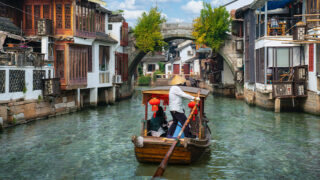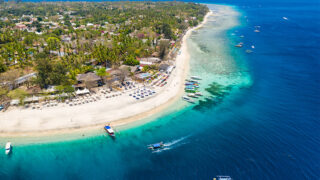New Zealand is a must-see and a fantastic holiday whether you’re a family, a couple or going solo! There are amazing destinations all over the North and South Island, from the biggest city Auckland down to stunning Milford Sound near the bottom of the country. Before you head off, read our recommended destinations from EL staff and readers, and our mini guide to all the travel information to help you plan your trip!
From Auckland to Queenstown
Traveller: Rebecca Simpson, Australian
We completed a road trip from Auckland to Queenstown, staying in small hotels and motels that we booked online (and often quite late). This kept our trip really flexible and we could stay a bit longer if we liked the place. You do need to book ahead for Queenstown though, as it gets very busy.
New Zealand is an immensely family-friendly country to travel through. The South Island was a highlight for us. Queenstown is beautiful – there are endless fun things to do with kids and amazing food everywhere. New Zealand is also full of parks. We stopped every day and found great parks to play in or have lunch at. The kids loved our morning out on TSS Earnslaw and walking out to Franz Josef Glacier. Riding on the Cook Strait Ferry was also fun!
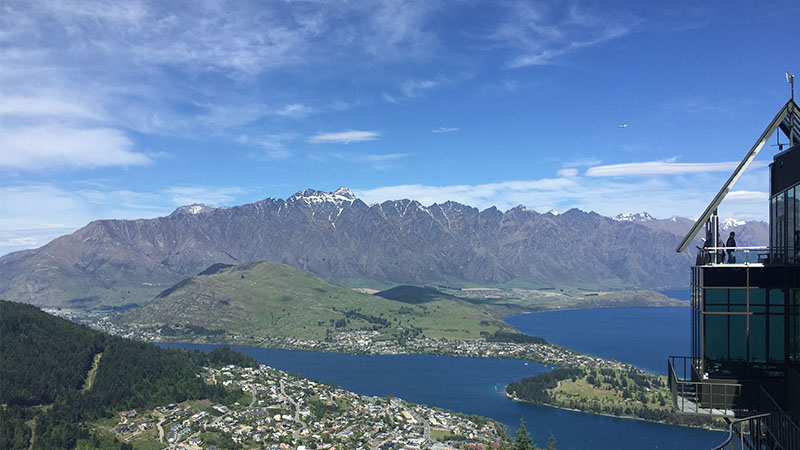
Visiting the South Island
Traveller: Lindsay Yap, Singaporean
We did a two-week trip around South Island last December and had a great time. After flying into Christchurch, we drove south to Invercargill and then up along the west coast to Picton. We stayed in all sorts of Airbnbs along the way, from remote farm cottages (with cows and sheep right outside our window!) to houses and apartments in the city. As we stayed mostly in homes, we were able to cook many of our dinners, buying everything we needed for a good price at the grocery stores – delicious steak, lamb and salmon almost every night (not that we’re complaining!).
There was so much to do and see, from riding the luge in Queenstown and checking out beautiful lupin flowers at Lake Tekapo to cruising Milford Sound and hiking the popular Hooker Valley Track in Mount Cook National Park. While at Milford Sound, which is one of the wettest places in the world, we were fortunate enough to get good weather. So, we got to enjoy some sun and a cool breeze on the deck while enjoying the scenery. We even spotted some fur seals sunbathing on the rocks.
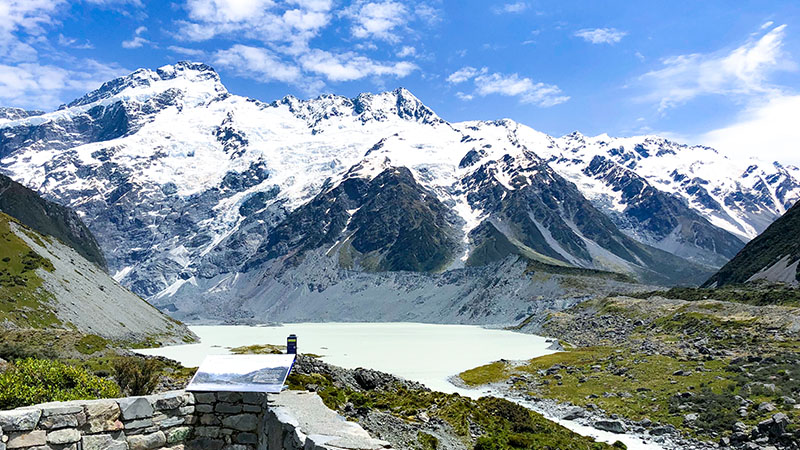
Visiting the North Island
Traveller: Kate Marsden, Australian
We chose New Zealand as our honeymoon destination, jumping into a Spaceship camper and driving around the North Island, sleeping in the back of the van along the way. It was great – we just stopped wherever took our fancy for the night, parked the car and slept there. My standouts were noshing along the Coromandel Coast, stopping for a gander and a snack in tiny fish shop shacks. Oysters. Chowder. Smoked trout. It was sublime. New Plymouth was also a pleasant surprise. We stumbled across some great street art and vintage shops. I also visited the home of Ozone coffee because, well, coffee is my kinda pilgrimage.
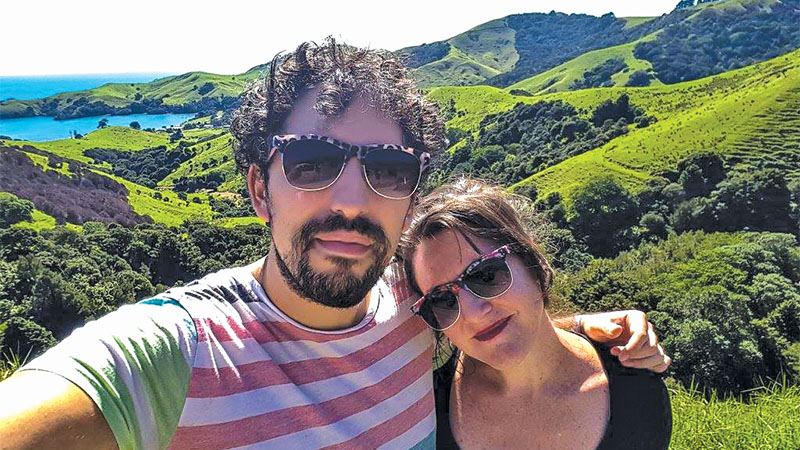
New Zealand’s animal life
Traveller: Leanda Rathmell, British
New Zealand has been on my mum’s bucket list for years, so for her 50th birthday we rallied up our family of seven, hired a six-berth campervan and took to the road for an epic 10-day adventure.
We’re a family of animal-lovers, so our first stop in Kaikoura to go whale-watching and visit the seal colonies set the bar high. From there, we made our way down to Akaroa for a touch of French colonial history, parking our home at the Little River Campground – a gorgeous site full of fun activities for kids.
Bright and early the next morning, it was back on the road to check out the famed spots of the South Island, from Lake Tekapo to Lake Pukaki and the picturesque town of Wanaka. We kept a loose schedule and stopped off whenever we spotted something of interest, be it a vineyard, picnic spot or a Manuka honey farm. After a day of hiking and marvelling at the glaciers of Mount Cook, we gave our weary legs a luxurious treat and abandoned our campervan for a night to check-in at Dusky Ridges in Te Anau.
Owned by a charming Kiwi couple, our night in this beautiful farmstay was made unforgettable with delicious homegrown produce and a chance to meet all their adorable farm animals.
Our final stop in our trusty campervan was Milford Sound to gawk at the towering fjords before meandering down the winding road of Devil’s Staircase to hit Queenstown. Here, we bid our mobile home goodbye and checked into an Airbnb property overlooking the town. There’s so much to do here – from bungee jumping to luging! Just make sure you make time to stop in at the famous Fergburger – hands down, the best burger I’ve had!
# NEW ZEALAND TRAVEL TIPS
The basics
Population: 5 million
Capital: Wellington
Religion: Christianity is the predominant religion
Emergency numbers: 111 (police, ambulance and fire service)

Fact file
- New Zealand was the first country to have its three top positions of power held simultaneously by women: the Prime Minister (Helen Clark), the Governor General (Dame Silvia Cartwright), and the Chief Justice (Sian Elias).
- In 1893, New Zealand was the first major nation to have universal suffrage.
- New Zealand has two national anthems: God Save The Queen and God Defend New Zealand.
- Sir Edmund Hillary, the first man to summit Mount Everest (with climbing partner Tenzing Norgay), was a New Zealander. His face is on the New Zealand $5 bill.
- Taumatawhakatangihangakoauauotamateaturipukakapikimaunga-horonukupokaiwhenuakitanatahu is the Māori name for a hill in Hawke’s Bay.
- Wellington is the southernmost capital city in the world.
Key dates
- 6 February: Waitangi Day. New Zealand’s national day commemorates the first signing of the country’s founding document, the Treaty at Waitangi, in 1840.
- 9 February: Marlborough Wine & Food Festival. New Zealand’s oldest and premier festival of its kind, in a stunning vineyard location.
- 25 April: Anzac Day. First observed in 1916, Anzac Day commemorates Australians and New Zealanders who lost their lives in war.
Hot spots and itineraries
Popular destinations include Auckland, Lake Taupo, Wellington, Christchurch, Queenstown, Kaikoura, Raglan, Marlborough and Stewart Island. Three areas have World Heritage Site status, including New Zealand’s Sub-Antarctic islands.
Some itinerary ideas
- South Island: Picton – Marlborough Sounds – Nelson – Kaikoura – Christchurch – Dunedin – Queenstown – Milford Sound
- North Island: Auckland – Bay of Islands – Rotorua – Taupo – Wellington
Staying safe and healthy
If you’re setting out on a hike or to climb a mountain, make sure somebody knows your whereabouts, or contact the Department of Conservation (DOC). Weather can change quickly, making conditions very dangerous for anyone who isn’t adequately prepared. Also, while there are no snakes or other especially dangerous animals in New Zealand, small insects including sandflies can be an annoyance. (The Milford Track in the South Island ends at “Sandfly Point”.) Repellents and long-sleeved clothing will help.
Cultural things
While you’re there, please don’t…
- … try to bring natural products through customs. Biosecurity is treated very seriously in New Zealand.
- … eat or drink when inside a Maori wharenui (meeting house) – the house is considered a sacred area.
Before you go, read …
- The Bone People by Keri Hulme (1984) – one of the country’s most successful novels, the story weaves tales of Maori myths and also European heritage.
- How to Watch a Game of Rugby by Spiro Zavos (2004) – a sport journo’s book about New Zealand’s obsession with rugby.
Before you go, watch …
- The Lord of the Rings – Peter Jackson’s first trilogy of Tolkien films showcases the New Zealand countryside majestically.
- Whale Rider – highly regarded drama about a 12-year-old Maori girl who wants to become the chief of her tribe.
They said it
“New Zealand is not a small country but a large village.” – director Peter Jackson
“Get the whanau together, stay in a bach, crack open the chilly box and slap on your jandals.” – former Prime Minister John Key, joking about reasons to visit NZ
“New Zealand is my favourite country to visit.” – surfer Tom Curren
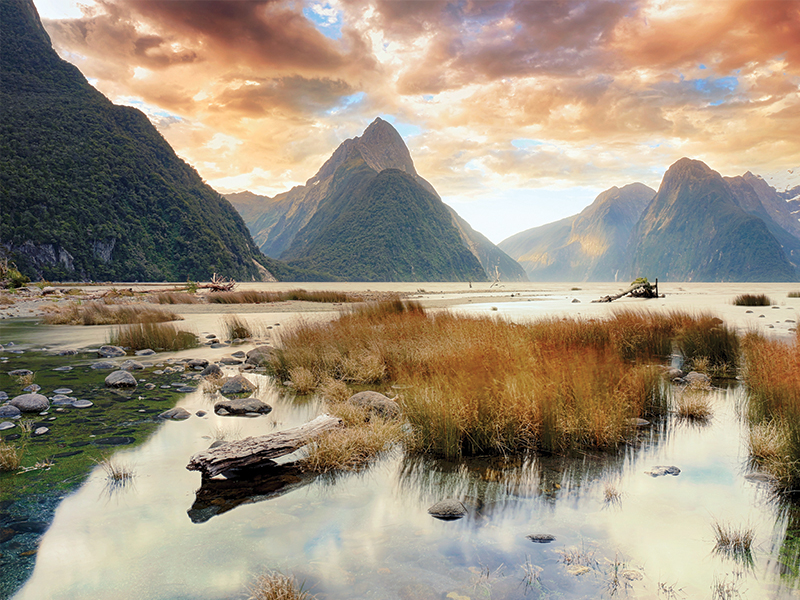
Important questions
Do I need a visa?
Most visitors to New Zealand don’t require visas for visits of less than three months. Citizens of countries not on the visa-waiver list can find detailed information about applying for a visa at immigration.govt.nz. However, you do need an NZeTA (New Zealand Electronic Travel Authority) before you travel.
What time is it in New Zealand?
New Zealand is 12 hours ahead of GMT, 2 hours ahead of Sydney and 4 hours ahead of Singapore. Between April and September, the country observes daylight time (13 hours ahead of GMT).
What’s the money situation?
The New Zealand dollar (NZD) is the national currency. Foreign currency and travellers cheques can be changed at most banks or licensed money changers. Credit cards are also widely accepted and ATM withdrawals possible at the many machines across the country.
When’s the best time to visit?
New Zealand has a temperate climate all year round. Regions vary from extremely wet to semi-arid to subtropical, so check your destination beforehand. Most skiers book between June and September.
What’s the lingo?
English, though around 3 to 4 percent of the population speak Maori. Here are a few phrases to get you started:
- Hello: Kia ora
- How are you? Kei te pehea koe?
- What’s your name? Ko wai tou ingoa?
- My name is …: Ko … ahau
- Where are you from? No hea koe?
- Goodbye: E noho ra (said by person leaving); E haere ra (said by person staying)
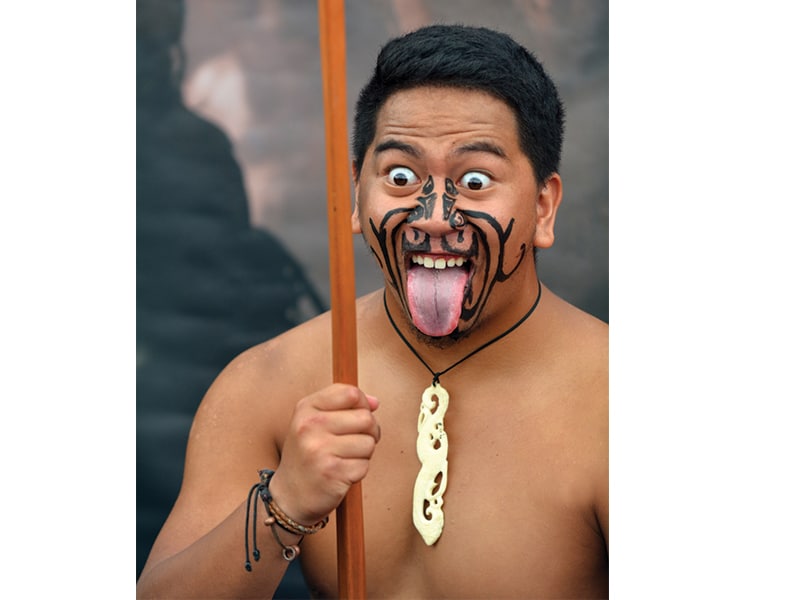
Last but not least
Is there anything I should know about meeting the locals?
A handshake is the formal way of greeting someone in New Zealand. However, the traditional Maori greeting is the hongi, expressed by the rubbing or touching of noses.
What’s a must-try dish?
Pavlova – a sweet meringue-like crust filled with whipped cream and topped with fresh fruit. (The debate continues as to its country of origin, with Australia and New Zealand both laying claim.)
What should I buy as a souvenir?
Good options included “cryovaced” New Zealand lamb, wine, a kiwi plush toy and also an All Blacks rugby shirt.
Like this? Read more in our Travel section.

